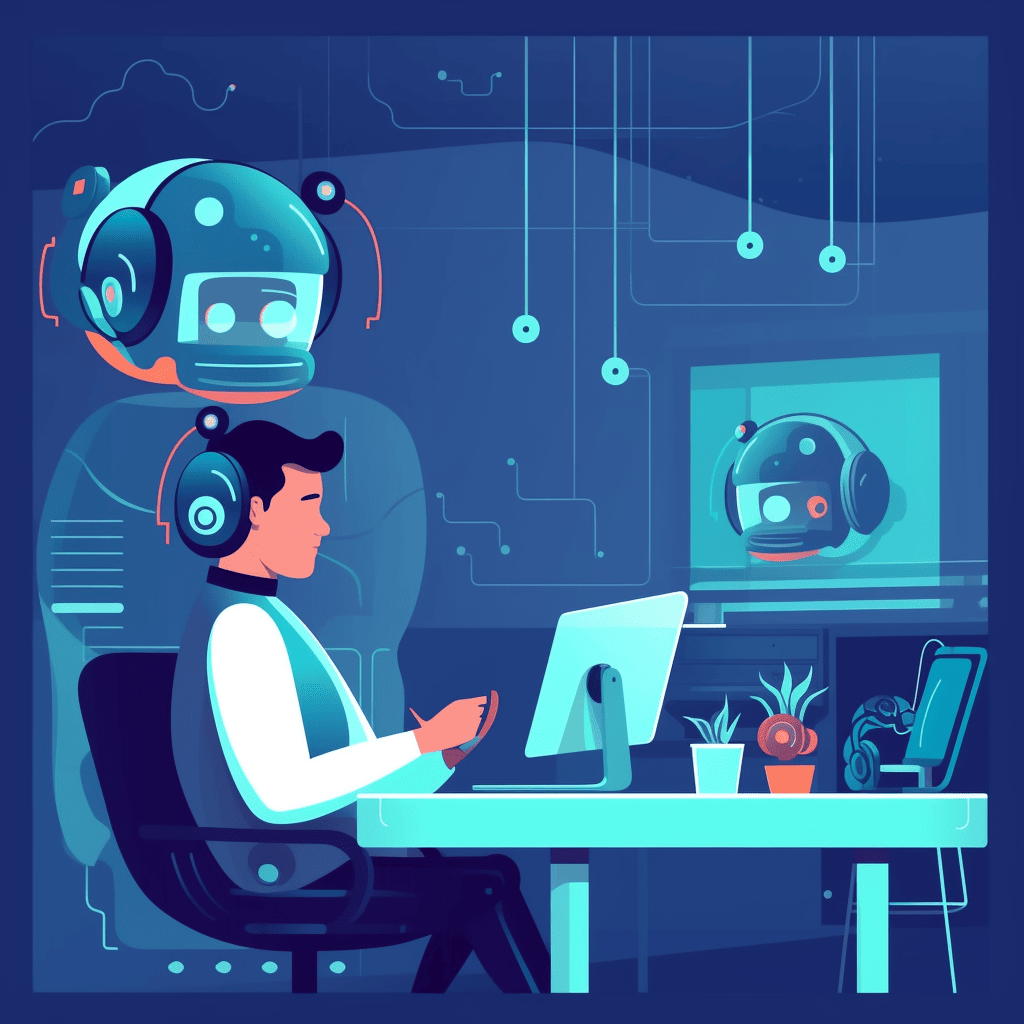
Introduction
AI-powered chatbots have become increasingly popular in call centers as businesses aim to provide faster and more efficient service to customers. In this article, we will explore the pros and cons of using AI-powered chatbots in call centers, including how they can improve customer experience and reduce costs. We will also discuss potential limitations and provide insights into whether they are a good fit for your business needs.
Benefits of AI-powered Chatbots in Call Centers
Improved Customer Experience
AI-powered chatbots can provide customers with faster and more efficient service, leading to greater satisfaction and loyalty. By handling multiple inquiries at the same time, chatbots eliminate long wait times, and their 24/7 availability means customers can get help outside of business hours.
Cost Savings
Implementing AI-powered chatbots in call centers can reduce the need for additional staff and provide a more cost-effective service. They don’t require breaks or time off, and their ability to handle multiple inquiries at once increases efficiency.
Scalability
Chatbots can be easily scaled to handle an increase in demand, making them ideal for peak periods such as holidays or sales events. They help reduce the risk of unanswered calls or long wait times.
Consistency
Chatbots can provide consistent levels of service, minimizing the risk of errors and inconsistencies. They can be programmed to provide the same response to the same question, ensuring customers receive accurate and up-to-date information.
Limitations of AI-powered Chatbots in Call Centers:
Limited Capabilities
Chatbots may not be able to provide the same level of service as human representatives. They may struggle with complex issues that require personalized attention, and language processing algorithms may not be able to understand certain accents or dialects.
Lack of Emotional Intelligence
Chatbots lack emotional intelligence and may struggle to understand or respond appropriately to a customer’s emotions. This can result in negative customer experiences, leading to potential damage to the customer-business relationship.
Initial Set-Up Costs
The initial investment in software and hardware required to implement chatbots in call centers can be costly, and businesses may need to hire consultants or developers to integrate them into existing systems.
Maintenance and Updates
Chatbots require ongoing maintenance and updates to function correctly and provide accurate information to customers. This can be time-consuming and costly, especially if external developers or consultants are required.
Risk of Errors
Chatbots are not infallible and may make mistakes or provide incorrect information to customers, potentially damaging the business’s reputation. Additionally, they may struggle to understand complex or nuanced questions, resulting in incomplete or inaccurate responses.
FAQs:
- Are chatbots a replacement for human customer service representatives?
- No, chatbots are not a replacement for human representatives. They can handle routine inquiries but may not provide the same level of service as human representatives.
- Can chatbots understand different accents and dialects?
- Chatbots may struggle to understand certain accents or dialects, but some are designed to handle multiple languages and dialects.
- Do chatbots require updates or maintenance?
- Yes, chatbots require ongoing updates and maintenance to ensure they function correctly and provide accurate information to customers.
- How can businesses ensure chatbots provide accurate information to customers?
- Businesses can monitor chatbot interactions and review customer feedback to ensure accurate information. Additionally, they can use machine learning algorithms to train chatbots to provide more accurate responses over time.
- Can chatbots provide empathy and emotional support to customers?
- Chatbots lack emotional intelligence and may not provide the same level of empathy and emotional support as human representatives. However, some chatbots are designed to respond to specific emotional cues and provide appropriate support.
- Are chatbots cost-effective for small businesses?
- Implementing chatbots in a call center requires an initial investment in software and hardware, which may not be feasible for smaller businesses. However, chatbots can provide cost savings over time by reducing the need for additional staff.
Conclusion
AI-powered chatbots in call centers have both advantages and disadvantages. While chatbots can improve customer experience and reduce costs, they may not provide the same level of service as human representatives. Implementing chatbots requires an initial investment, and ongoing maintenance and updates can be costly.
Businesses should carefully consider the benefits and drawbacks of using chatbots and determine whether they are a good fit for their needs and budget. Overall, the use of AI-powered chatbots in call centers can help businesses provide better customer experience, improve cost efficiency, and scale operations to handle an increase in demand.
Thank you for reading this article about Pros and Cons of AI-powered Chatbots in Call Centers.
